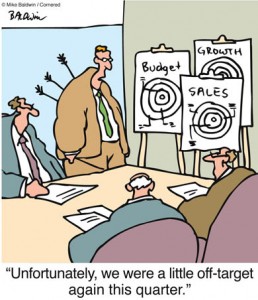 This is the first of three posts for the Silverpop B2B Marketing University, March 3rd in Washington DC. I will be speaking about Marketing Automation features, the marketing technology ecosystem, and the impact of Social Media. In this first post I will give an overview of my talk on Social Media: if you’d like to hear the full story, please come to the DC event, or wait until the University comes to a city near you (London, Palo Alto, Boston confirmed; Dallas, New York, Atlanta and Chicago announced).
This is the first of three posts for the Silverpop B2B Marketing University, March 3rd in Washington DC. I will be speaking about Marketing Automation features, the marketing technology ecosystem, and the impact of Social Media. In this first post I will give an overview of my talk on Social Media: if you’d like to hear the full story, please come to the DC event, or wait until the University comes to a city near you (London, Palo Alto, Boston confirmed; Dallas, New York, Atlanta and Chicago announced).
Social Media
When talking about Social Media, most people immediately think of Twitter or Facebook. I define it much broader: Social Media facilitates any online social interaction, where monologues have been transformed into social dialogs. So it’s about having conversations with your (potential) clients rather than just blasting out your message. Let’s look at the 5 Ways in which Social Media is changing Lead Management and Marketing Automation.
1. Lead Generation
Where do your potential clients “hang out” when they browse the web? Are they on LinkedIn, do they Tweet or are they part of an online community like Marketingprofs? After some initial research, start interacting on the preferred Social Networks and measure the results: add tags to your social media interactions, so you see if it drives new people to your site. Use your Marketing Automation and CRM systems to see if this traffic converts to qualified leads and sales opportunities.
2. Lead Nurturing
It may take a while before potential clients are ready to buy or even want to talk to a sales person. In the beginning, they may not even register on your website, so they are still anonymous. No worries, with Social Media you can offer prospects multiple ways to stay in touch: if they’re not yet ready for your email newsletter, maybe they want to “fan” your company on Facebook, or simply subscribe to your blog’s RSS feed. If you incorporate Social Media interaction in your lead score, you can measure the effectiveness of these Social Media activities.
3. Lead Intelligence
Sales & marketing alignment is finally getting the attention it deserves. Marketing is starting to see sales as a customer who demands high-quality leads. With the right technology you can incorporate information from various online sources, so sales people are better prepared when they make the first call. It’s not just status information like the employment history from LinkedIn, but also real-time info from sites like Twitter.
4. Intra-company Collaboration
Social Media does not just transform how you interact with external parties, but also how you run your marketing operation. If multiple people work together on campaigns, it’s extremely useful if you can collaborate in the application itself. This is already commonplace in office applications like Microsoft Office and Google Docs, where you can add notes in the documents themselves, rather than putting those in an email. In the marketing space, the most well-known example is Google Analytics which lets you add annotations below each graph (click on the small triangle to show the annotation pane).
5. Customer Support
Often, Customer Support is in a separate department, and it’s seen as a cost center. Especially for subscription-based businesses, marketing should be closely involved in providing customers with the best possible experience: retaining customers is a lot cheaper than acquiring new ones. Companies like Zendesk, Helpstream and Get Satisfaction provide social support platforms, where existing customers can help each other, rather than channeling all questions to a support technician. You can also use Social Networks to keep customers informed of new products and services, and giving them the opportunity to provide feedback.
Conclusion
Many of today’s customers interact with Social Media. As a vendor, you can take advantage of this by actively participating on external networks, and adding social features to your own applications. I hope this post gave you some ideas to create a comprehensive Social Media strategy, and how to justify this with the right metrics.


